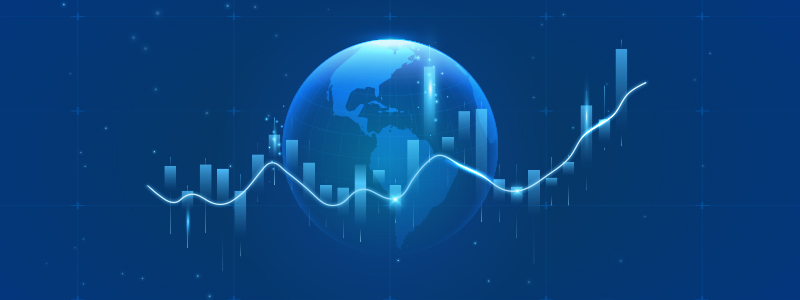The modern data-driven approach comes with a host of benefits. A few major ones include better insights, more informed decision-making, and less reliance on guesswork.
However, some undesirable scenarios can occur in the process of generating, accumulating, and analyzing data. One such scenario involves organizational data scattered across multiple storage locations. In such instances, each department’s data often ends up siloed and largely unusable by other teams. This displacement weakens data management and utilization. Ultimately, it also prevents business data from being the powerful resource it can be.
The solution for this lies in data orchestration. Let’s learn more about it.
What is Data Orchestration?
Data orchestration is an automated process that combines and organizes data from disparate data sources. It makes fragmented data more comprehensive, up-to-date, and reliable.
The data orchestration process isn’t functionally limited to data movement. It comprises many sub-processes that tend to different data-related requirements — such as synchronizing metadata, triggering data loads, and performing quality checks.
Standardization ensures that all data that undergoes orchestration is formatted uniformly. This unified approach enables organizations to benefit from an undisrupted data flow between storage systems and data analysis tools, keeping data ready for real-time analysis.
Data orchestration is often confused with data pipeline orchestration, and the two terms are even used interchangeably. However, this is inaccurate, and the difference between the two is not just semantical.
Data pipeline orchestration is more focused than data orchestration. It’s limited to the tasks related to building, operating, and managing a data pipeline. It’s also more contextual than general data orchestration since it’s tied to the operational logic at the core of a specific pipeline. Since data pipeline orchestration executes an interconnected chain of events in a specific sequence, it caters to the unique data requirements a pipeline is designed to fulfill.
Automate Your Data Tasks with Astera
Astera enables you to automate data tasks' execution using its Job Scheduler and Workflows features. Try them out for yourself!
Request a FREE Demo Today! What are the Benefits of Data Orchestration?
- Increased Efficiency: Organizations generate a lot of data, and manual processes are slow, inefficient, and prone to human error. In contrast, data orchestration creates more efficient workflows through automation. This accelerates data processing and minimizes errors. Moreover, this frees data personnel to undertake higher-value tasks that drive ROI for the business.
- Scalability: An organization’s data volumes expand concurrently with its growth, and data orchestration platforms are designed to scale easily. They accommodate increasing data and more complex workflows, keeping up with a business without any changes in performance.
- Time Savings: Through real-time accessibility, data orchestration ensures that analysts are always working with the most current data. They don’t have to worry about bottlenecks, operational delays, or the time it might take for data integration and preparation.
- Eliminating Data Silos: Data silos are inevitable during events that trigger major restructuring. For example, mergers and acquisitions can result in an influx of organizational and customer data. However, silos can also easily result from regular business operations — typically when collaboration, access, and interoperability aren’t prioritized. An enterprise must address data silos if it’s to leverage its data to the fullest. Data orchestration effectively creates a single source of truth while removing data silos and the need for manual migration.
- Compliance and Governance: Centralizing different data sources facilitates compliance by giving companies an in-depth understanding of their data and its scope. They can monitor data flow from various outlets, document and demonstrate data sources as needed, and ensure that data is processed correctly. Centralization also makes it easier for a company to implement its data governance framework uniformly.
![A comparison between data orchestration and ETL.]()
Data Orchestration vs. ETL
Extract, transform, load (ETL) primarily aims to extract data from a specified source, transform it into the necessary format, and then load it into a system. Generally, this destination or target system is a data warehouse.
Data orchestration involves ETL processes, but its functionality extends beyond extraction, transformation, and loading. It also has a data management aspect since it coordinates complex data workflows involving multiple systems and platforms.
Traditional ETL isn’t inherently flexible. Any flexibility in its processes results from using a modular design approach or no-code tools. Without these elements, ETL involves rigidly structured workflows designed for specific source and destination systems. Changes in these sources or underlying data structures require extensive adjustments in a manual ETL process.
Data orchestration is inherently a more flexible solution for handling changing data needs. It supports dynamic workflows that adapt quickly to evolving data requirements and sources. This capability also enables an organization to enact agile data processing.
Traditional ETL processes data in batches. It prepares, transforms, and moves the data periodically at user-specified intervals. It is better suited for use cases that don’t need real-time processing.
On the other hand, data orchestration works in real-time to ensure immediate data flow and rapid analytics. This makes it especially useful when time is of the essence, and quick access to insights is a must.
While ETL can integrate with different data sources and targets, new integrations require custom development. It’s also limited to structured or relational data formats.
Data orchestration provides broader integration capabilities and handles both structured and unstructured data. It readily connects on-prem and legacy systems, cloud solutions, and various data sources.
Data orchestration offers impressive scalability since it can easily handle data growth and new, disparate sources.
ETL’s batch-based processing can hinder scalability, resulting in performance bottlenecks when faced with increasing demands.
How Data Orchestration Works: The Process
- Data Ingestion: The data orchestration process starts with data collection. Tools collect data from different sources and ingest it into the orchestration system for additional processing.
- Data Transformation: After the data is ingested, it undergoes transformations that cleanse, normalize, and enrich it. Common tasks during this stage include deduplication, data format conversions, and implementing business rules to improve data consistency.
- Data Integration: Integrations with other data sources turn the transformed data into a unified, cohesive dataset. This stage can involve merging data from different sources or reconciling any conflicting information.
- Data Activation: During the last stage of data orchestration, the processed data is delivered to the desired destination, ready to be operationalized. This destination is typically an analytics platform.
![A visual depiction of the data orchestration workflow.]()
What are the Challenges in Data Orchestration?
- Security: Securing data throughout the orchestration process requires considerable effort, mainly for encrypting in-transit and at-rest data and proficiently managing access controls. It can also be challenging to manage access rights so that sensitive data is only accessible to authorized personnel, especially in large organizations.
- Operational Difficulties: Data orchestration involves the detailed organization and coordination of various tasks within complex workflows. These tasks often rely on each other, creating a web of interdependencies that can be challenging to manage, particularly in large-scale environments. Organizations need to implement comprehensive systems to identify, record, and recover from errors that may occur within these data pipelines. The unavailability of these systems can result in potential data loss or corruption.
- Integration Challenges: When there is a wide range of data sources and platforms, discrepancies in their protocols can complicate integration, making it technically demanding and time-consuming.
- Cost Management: Implementing and maintaining a data orchestration system can be a considerable investment. Organizations must balance the benefits of efficiency and automation with the costs involved, especially when budgetary concerns arise.
- Change Management: Evolving business requirements require ongoing optimization and updates for data workflows and orchestration. These tasks require collaboration between data teams and business stakeholders. Managing data provenance is also a concern since organizations must maintain data lineage and trace the transformation history of every bit of data for accountability and transparency.
How do Data Orchestration Tools Help?
Data orchestration tools address the challenges mentioned above and simplify orchestration through a range of features and capabilities, often leveraging Artificial Intelligence (AI) to do so.
- Automated Workflow Management: These tools provide intuitive interfaces for designing, scheduling, and managing data workflows. They automate repetitive tasks, reducing manual effort and minimizing errors.
- Scalability: Modern data orchestration tools are built to scale, easily handling large data volumes and complex workflows. They leverage cloud infrastructure to provide elastic scalability, adapting to changing data needs.
- Integration Capabilities: These tools offer extensive integration options, connecting with a wide variety of data sources, cloud services, and applications. This flexibility ensures seamless data flow across the organization.
- Real-Time Processing: Many orchestration tools support real-time data processing, enabling organizations to respond quickly to changing data conditions and derive immediate insights.
- Data Quality Management: Advanced data orchestration tools include features for data cleansing, validation, and enrichment, minimizing data issues and ensuring consistency throughout the workflow.
- Monitoring and Alerting: These tools provide robust monitoring and alerting capabilities, allowing organizations to track data workflows in real-time, identify issues, and receive notifications when anomalies occur.
- Security and Compliance: Data orchestration tools incorporate security measures such as encryption, access controls, and auditing to protect sensitive data and ensure compliance with regulations.
These tools offer more than basic functions—they are loaded with advanced analytics and reporting features. This helps organizations dive deep into their data processes, pinpointing bottlenecks and areas for improvement. Some even use machine learning to enhance and predict workflow performance.
Additionally, with support for multi-cloud and hybrid environments, organizations can manage data across various infrastructure setups, giving them greater flexibility and resilience.
Summing It Up
In summary, data orchestration is essential for modern data management strategies, and its importance will only grow as data volumes and complexities increase. Companies with a robust data orchestration framework will be better equipped to use their data strategically, staying competitive in a rapidly evolving market. While implementing data orchestration comes with challenges, the advantages far outweigh them. With the right tools and approach, companies can fully use their data, driving innovation and achieving business goals.
As an end-to-end data management platform, Astera allows users to orchestrate data tasks and automate everyday data processes through its workflow orchestration feature and built-in job scheduler. Pre-built transformations and functions enable users to modify their data as needed. The platform’s data quality features make it easy for users to ensure they work only with reliable and accurate data. Following the necessary transformations and data quality measures, users can export data to their preferred BI platform for visualization.
Find out how Astera can help you orchestrate data pipelines. Sign up for a free 14-day trial today.
Authors:
![]() Usman Hasan Khan
Usman Hasan Khan
 Apr 29th | 11 AM PT
Apr 29th | 11 AM PT
